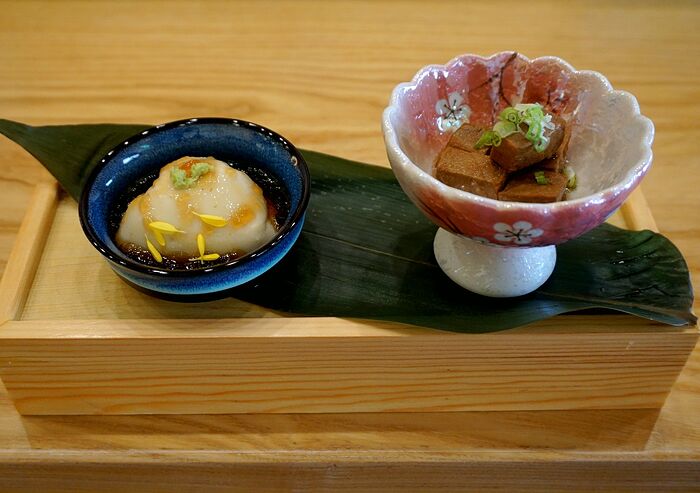“Omakase” is a relatively “new” Japanese concept of “leaving-it-to-the-chef” to decide what he thinks you should eat. Growing up, I never encountered “omakase” during trips to the Japan in the 70s and even up to the early 90s. The whole trend of just turning up in a restaurant and leaving it in the expert hands of your host chef to decide what you should eat actually came about in the 90s itself.
The reasons for the birth of “omakase” were simple, and it all started with the exclusive sushi restaurants. Prior to the heady economic boom days in Japan of the 1990s, the expensive sushi restaurants which catered to the moneyed also presented a barrier of sorts to the average salary-man who could not afford the often exorbitant prices these places charged. That was, until the economic boom which put wads of money into the pockets of many. However, many average Japanese were pretty unfamiliar with the different types of fish and other seafood served in these previously unaffordable joints, which can also be seasonal.
Hence, the “omakase” was born, and mainly due to these reasons given by the average Japanese diner:
- I’m too tired at the end of the day to have to decide what to eat
- I might embarrass myself in front of my guests if I make the wrong pick of the various seasonal produce on offer
- Might as well leave it to the expert, i.e. the sushi chef, to decide what’s best for me.
Of course, the “omakase” concept as we know it has expanded well beyond sushi these days, encompassing other dishes, both cooked or uncooked ones.
We were at Kazumasa Sushi Omakase, one of Penang’s premier omakase restaurants, for one such meal at lunch yesterday:

Appetisers:
Bonito kakuni (soy-braised tuna cubes)
Tomorokoshi tofu (cold corn tofu)
Sashimi plate: kampachi (longfin yellowtail) and tai (seabream)
Chawanmushi (savoury steamed egg custard, with gingko nut, shrimp, crab-leg, fishcake and mushroom)
Ebi fry with rice bubbles, served with shishito (green pepper) and enoki mushroom tempura
Tai (seabream) head simmered in sweet soy-braising sauce
Sushi moriawase
Dessert: Matcha (green tea) pudding
Easily one of the best in town, and very reasonably priced, too - all the above for MYR130 (US$30) per person.
Address
Kazumasa Japanese Cuisine
50C-1, Jalan Fettes, Fettes Park, Tanjung Bungah, 11200 Penang, Malaysia
Tel: +60182971886


















